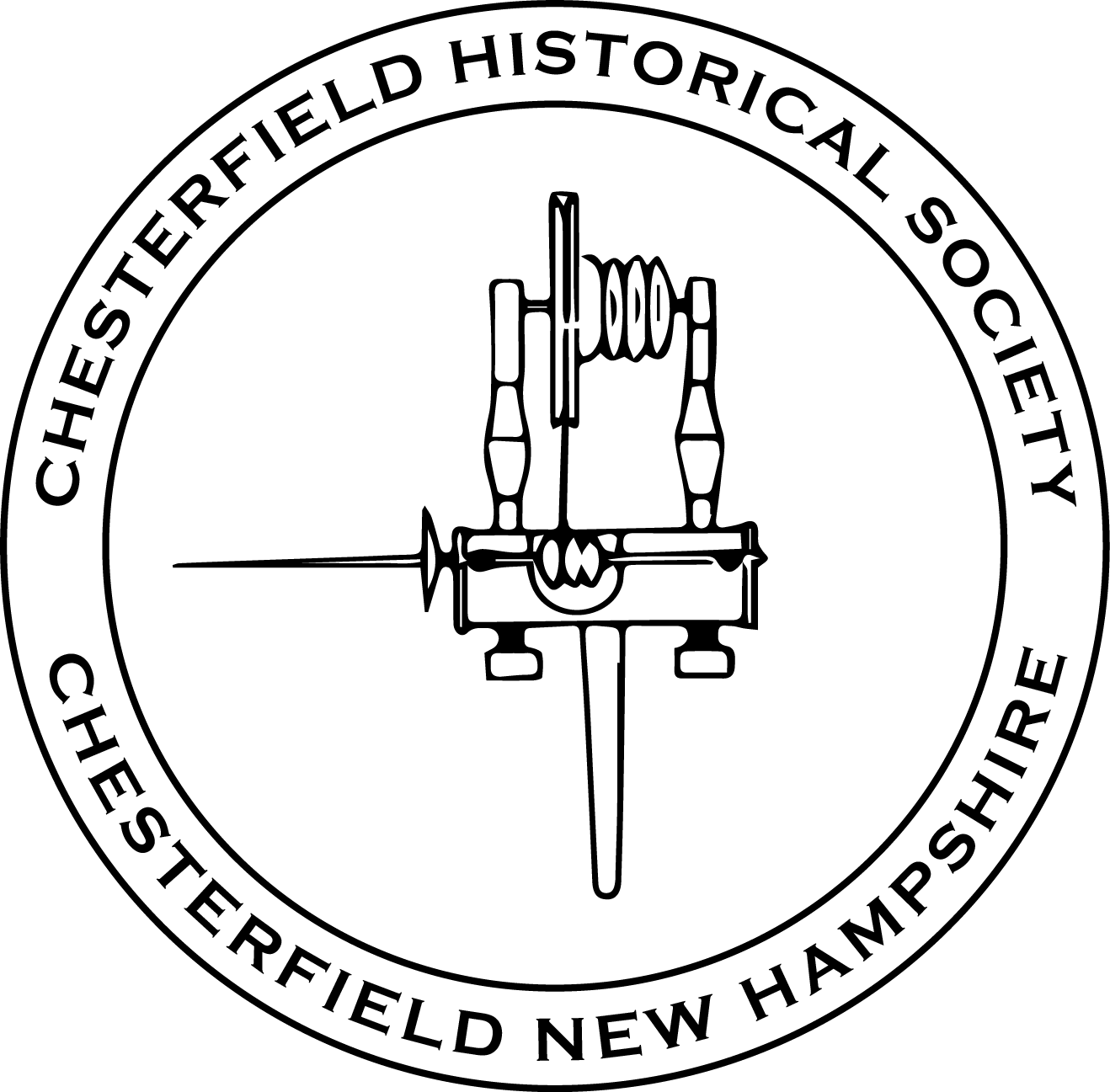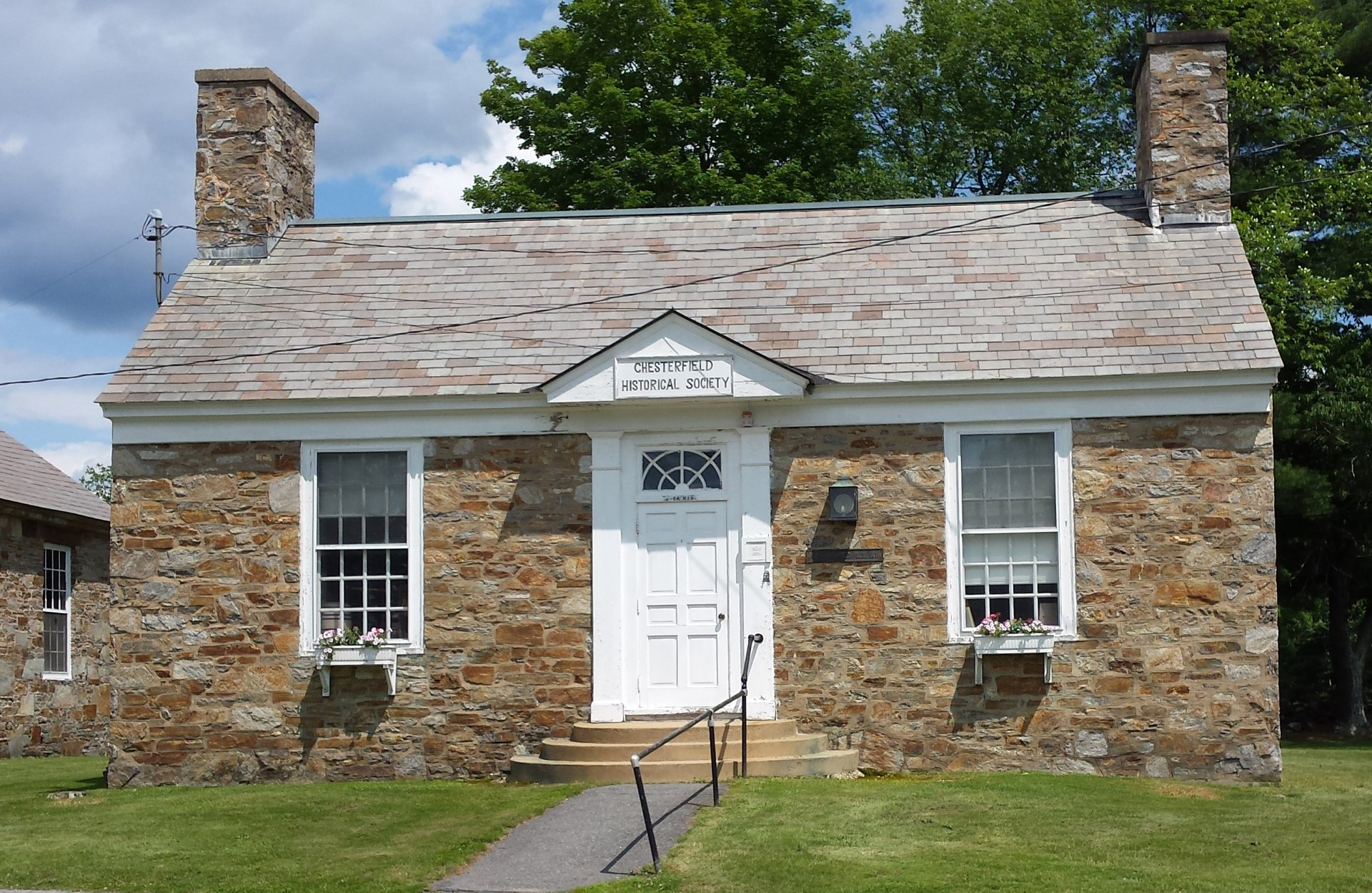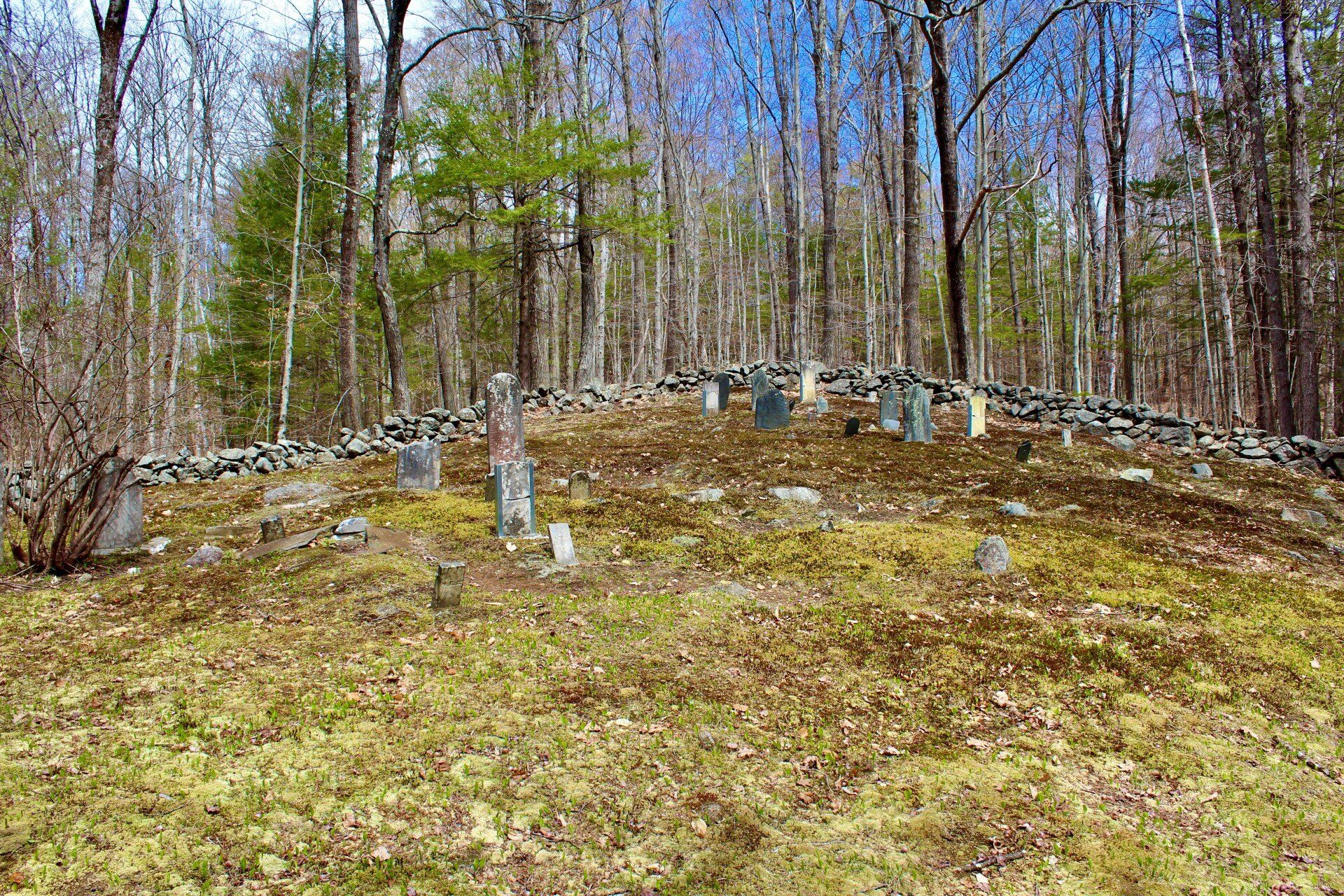A City in the Park
By Vanette C. Emery
1982
As you enjoy the trails in the Chesterfield part of Pisgah State Park, you will stumble upon old cellar holes and sturdy stonewalls, that stand as monument to the hard-working farmers who built them. Even though the people long ago deserted this southeastern quarter of town, there still remains the fruit of their labors. The deer still feed on apples from the trees near the barn sites, berries grow where the forest has not crept back, lilacs and iris still blossom beside the old door stones. Here and there roses bloom in the tall grass and myrtle flourishes around some cellar holes to cover the time-scarred rocks.
One wonders about the early settlers who chose to live here and accepted the challenge of taming the wild land. Most of it was covered with trees that had to be cut, and the wood was used for building houses, barns, cradles, implements, etc. Stumps had to be removed for the cornfields and pastures. Since most of the original farms were about 250 acres, roads had to be built from neighbor to neighbor, following old Indian trails and wandering cow paths, and finally extending to the Center Village and surrounding communities. Stonewalls were built to clear the rocks and mark boundaries. Deep wells were dug that still are full of water and now present a danger to unwary hikers.
Few people settled in this part of Chesterfield before 1780, but after the Revolution more families came whose desire to own land overcame their fear of isolation. The old folks called it Hardscrabble, the jokesters called it Nash City, and later the summer people talked about the Lost City which they could not find due to the fact that the natives were not eager to give those city folk any help. But, the section was really the southeastern quarter of the town and included Hardscrabble, Nash City, and Fullam Pond. You cannot separate it, because it is held together by a maze of roads, and all but the portion of Hardscrabble is in Pisgah State Park.
Probably the best known name in this section of the Park is Nash City. Over the years, the mystery of its location grew, and the myths and stories intrigued many people. One story swelled its population to almost city proportions.
In the 1800’s, Dr. Buttler was summoned to Nash City. He asked his wife to ride along with him. She told him to wait, so that she could get her pocketbook, as she might see something to buy in one of the stores. Imagine her surprise to find that Nash City was so named for a large family of Nashs who lived in two houses near Fullam Pond! One house was still standing in 1914 or 1915 and was described as a weathered building, not very high, not very long, and not very wide.
The founder of this family was Abraham Nash, who came to Chesterfield in 1812 with his wife, Betsey, and four of his eight children. The other four were born in Nash City, as were most of the nine children of his son, Reuben. Abraham lived to be 71, and Betsey struggled on in poor health for twenty years more with assistance from the Town.
People knew them as the “Basket Nashs”, as they made and sold baskets in neighboring communities. There is a story told about one of them who came down to Chesterfield Factory (Spofford) to sell his baskets and get medicine for his wife. After getting the medicine, he traded his baskets for gin and stopped at the blacksmith’s shop to share it. He put the bottle of medicine on a beam, and when he was ready to stagger home, he picked up another bottle which he took home to his wife. She refused to take it, saying it smelled like horse liniment. He told her that someone had to take it, and drank it himself!
The last Nash in town died in 1904 at the age of 78. Abraham and Betsey are buried in the little cemetery on Beal Hill in the Park. On your next visit, after a picnic by the restful water of Fullam Pond, see if you can find this early graveyard where the oldest stone bears the date 1790. (Pictured below)
(The above was written for The Chesterfield News, March 1982 addition, Vol. 6, No. 1)


